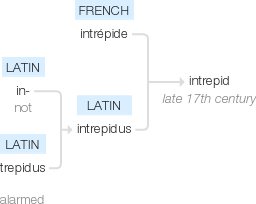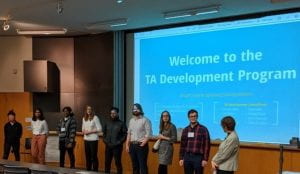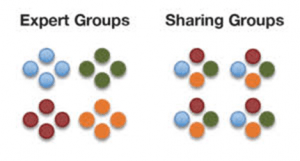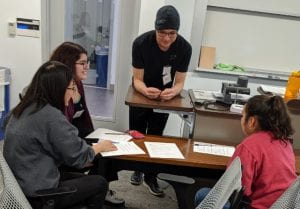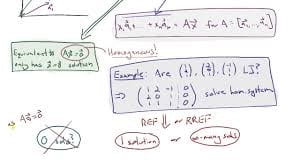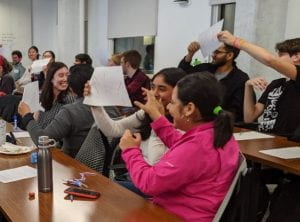in·trep·id /inˈtrepəd/ adjective
- fearless; adventurous. (Origin: late 17th century: from French intrépide or Latin intrepidus, from in- ‘not’ + trepidus ‘alarmed’. Source: Online Oxford dictionary)
ELI TA Development Consultants are Cornell Engineering’s academic leaders of the future. Always intrepid, they are passionate about the craft of teaching and excited to become leaders and peer educators to improve teaching and learning. Eight engineering PhD students become part of the ELI team each year to do the challenging work of providing intensive TA training workshops for Graduate and Undergraduate TAs in the College of Engineering in the early weeks of each semester. At the beginning of this past spring semester (2020) TA training workshops began with approximately 100 TAs in an auditorium, after some delicious self-served bagels and continental breakfast foods. Trainers introduced and over-viewed the day’s agenda in the lecture hall, and TAs heard from multiple University representatives and discussed policy issues in the large group session. This was followed by concurrent sessions, led by ELI TA Training Consultants, in several smaller rooms, then back to a group session in the auditorium again with self-serve lunch, back to concurrent sessions… etc. You see the picture: a large number of people, face-to-face, sharing food, shaking hands, heads bent together in group work or ‘think, pair share’ activities.
In the coming Fall semester of 2020, as University leadership makes the best decisions possible for education practices during the COVID 19 pandemic, this model will likely be different. But the quality and collaborative nature of teaching and learning must be maintained, whatever the temporary new model. The work of TA Training consultants will never be more challenging or more critical!
The young professionals who applied and interviewed to be leaders in Fall 2020 and Spring 2021, during the chaos brought on by the COVID -19 pandemic, deserve this descriptor in bold, uppercase: INTREPID. In a typical cycle, the summer includes nearly 30 hours of team building, learning from the literature and from each other, developing best practices, presentation and active workshops – all in-person, on campus. This prepares trainers for organizing, implementing, and assessing the face-to-face training of all the TAs in the College come the start of the academic year. But for Fall 2020, at least, all bets are off. These dedicated engineering graduate students came to their online interviews with the knowledge that TA training may be a ‘whole different animal’ this round. They will train online, as long as is necessary, and become experts in creating inclusive engaging pedagogy in every possible delivery venue. They put their best forward at a time when the only thing that was certain was how much they would be needed in this uncertain time.
Introducing this year’s INTREPID TA Training Consultants: top left – Sanjuna Stalin (CBE), top right – Katie Adler (TA Fellow, CEE), middle row left-to-right: Vivienne Liu (Systems), Kyle Wellmerling (MAE), Doga Yucalan (MAE), bottom row left-to-right: Arnaldo Rodriguez-Gonzalez (MAE), Prayag Biswal (CBE), Doga Yucalan (MAE), Andrew Kang (MAE).
At the first online training of this season, just before the end of one of most difficult teaching semesters in the history of the College due to a mid-semester online shift, the smiling faces, thoughtful comments and engaged intelligent suggestions, made it clear that these Engineers were “not alarmed,” but ready and willing to be nimble and prepared for whatever was to come. In addition to engaging students in the classroom face-to-face, these educators will to be ready to train their peers about online engagement, diversity and inclusion, discussion forum best practices – not to mention being sure that their own presentations were ADA-compliant and incorporating those best practices in the information for course TAs.
This group knew from the beginning that they would have to be prepared for all/any possible scenarios for Fall 2020 TA trainings. As we add ‘online’, ‘hybrid’ and ‘ADA compliant’ to our list of adjectives for TA training that already includes ‘accessible’, ‘student-centered’, ‘engaging’, these Engineering Grad Students have signaled to ELI and to the College that they are ready for the growth and the challenge. INTREPID indeed.
